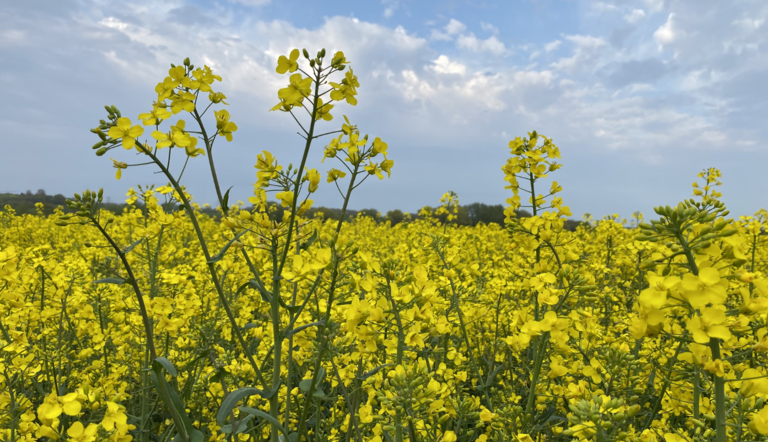
Combatting seed weevils and diseases

To save time and money, many growers and agronomists will want to apply a pesticide and a sclerotinia fungicide in the same treatment. Unfortunately, most insecticides are not recommended for mixing with triazoles (including prothioconazole) as the latter can increase the toxicity of the former.
However, MAVRIK (240 g/L tau-fluvalinate) is different thanks to its unique structure: one of the enzymes produced by bees to degrade the secondary metabolites that protect plants from attack by herbivores and pathogens can also degrade MAVRIK. As a result, MAVRIK has a lower inherent toxicity to honeybees and bumblebees compared to other pyrethroids.
In addition, the physio-chemical behaviour of tau-fluvalinate means it rapidly moves into, and strongly binds with, the waxy layer in plant cuticles, thereby making it much less readily available to most beneficial insects once the spray is fully dried down.
These characteristics mean it is possible to mix MAVRIK with triazoles such as prothioconazole without increasing the insecticide's threat to beneficials when applied in real-world situations.
Despite its reduced toxicity to beneficials, MAVRIK is still a broad-spectrum insecticide, so it is vital that it is only applied at the appropriate timing and used strictly in accordance with the label and the following CPA guidelines:
- Only apply MAVRIK once the target species has reached threshold.
- Only apply MAVRIK when bees are not actively foraging – in practice this means only applying in the early morning or late evening.
- Respect buffer zones to protect non-target arthropods:
- Avoid spraying oilseed rape within 6m of the field boundary to reduce effects on non-target arthropods.
- Do not allow the spray from horizontal boom sprayers to fall within 5m of the top of the bank of a static or flowing waterbody, or within 1m of the top of a ditch which is dry at the time of application.
- Aim the spray away from water.
- MAVRIK is not eligible for buffer zone reduction under the LERAP scheme.


